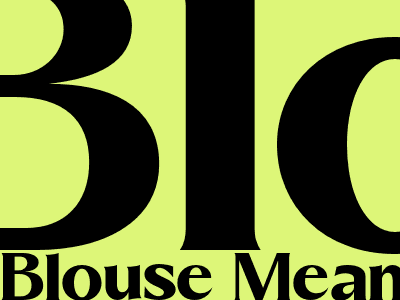Blouse: Definition, History, and Evolution
A Comprehensive Guide to the History and Cultural Significance of Blouses
A blouse is a loose-fitting upper garment typically worn by women. It is usually made from a lightweight fabric, such as cotton, silk, or linen, and is designed to be comfortable and easy to wear. Blouses can be plain or patterned, and they can be adorned with a variety of embellishments, such as lace, embroidery, or ruffles.
Blouses have a long and storied history. They first appeared in the 15th century as undergarments worn by women under their dresses. However, by the 17th century, blouses began to be worn as outer garments, and they quickly became a popular fashion item for women of all ages. In the 19th century, blouses became increasingly elaborate, and they were often made from luxurious fabrics, such as silk and lace. Blouses also began to be worn by men during this time, and they quickly became a staple of the male wardrobe.
Today, blouses are still a popular fashion item for both men and women. They are available in a wide variety of styles, colors, and fabrics, and they can be dressed up or down to suit any occasion. Blouses are a versatile and timeless piece of clothing that can be worn by people of all ages and backgrounds.
The Cultural Significance of Blouses
Blouses have a rich cultural significance in many parts of the world. In some cultures, blouses are seen as a symbol of modesty and femininity. In other cultures, blouses are seen as a symbol of wealth and status. Blouses have also been used as a form of political protest, and they have been worn by women to show their support for various causes.
In the West, blouses are often seen as a symbol of professionalism and sophistication. They are a common sight in offices and other workplaces, and they are often worn by women who want to project a polished and put-together image.
In some cultures, blouses are seen as a symbol of national pride. For example, the traditional Mexican blouse, known as the "huipil," is often worn by women to celebrate their Mexican heritage.
The Evolution of Blouses
Blouses have evolved significantly over the years. In the early days, blouses were simple garments made from plain fabrics. However, as fashion changed, blouses became more elaborate and adorned with a variety of embellishments. In the 19th century, blouses became increasingly tailored, and they began to be fitted to the body. In the 20th century, blouses became more relaxed and informal, and they began to be worn in a wider variety of settings.
Today, blouses are available in a wide variety of styles, colors, and fabrics. They can be dressed up or down to suit any occasion, and they can be worn by people of all ages and backgrounds. Blouses are a versatile and timeless piece of clothing that will continue to be popular for many years to come.
Conclusion
Blouses are a versatile and timeless piece of clothing that has been worn by people of all ages and backgrounds for centuries. They have a rich cultural significance and have been used as a form of self-expression and political protest. Blouses have evolved significantly over the years, and they continue to be a popular fashion item today.

Comments